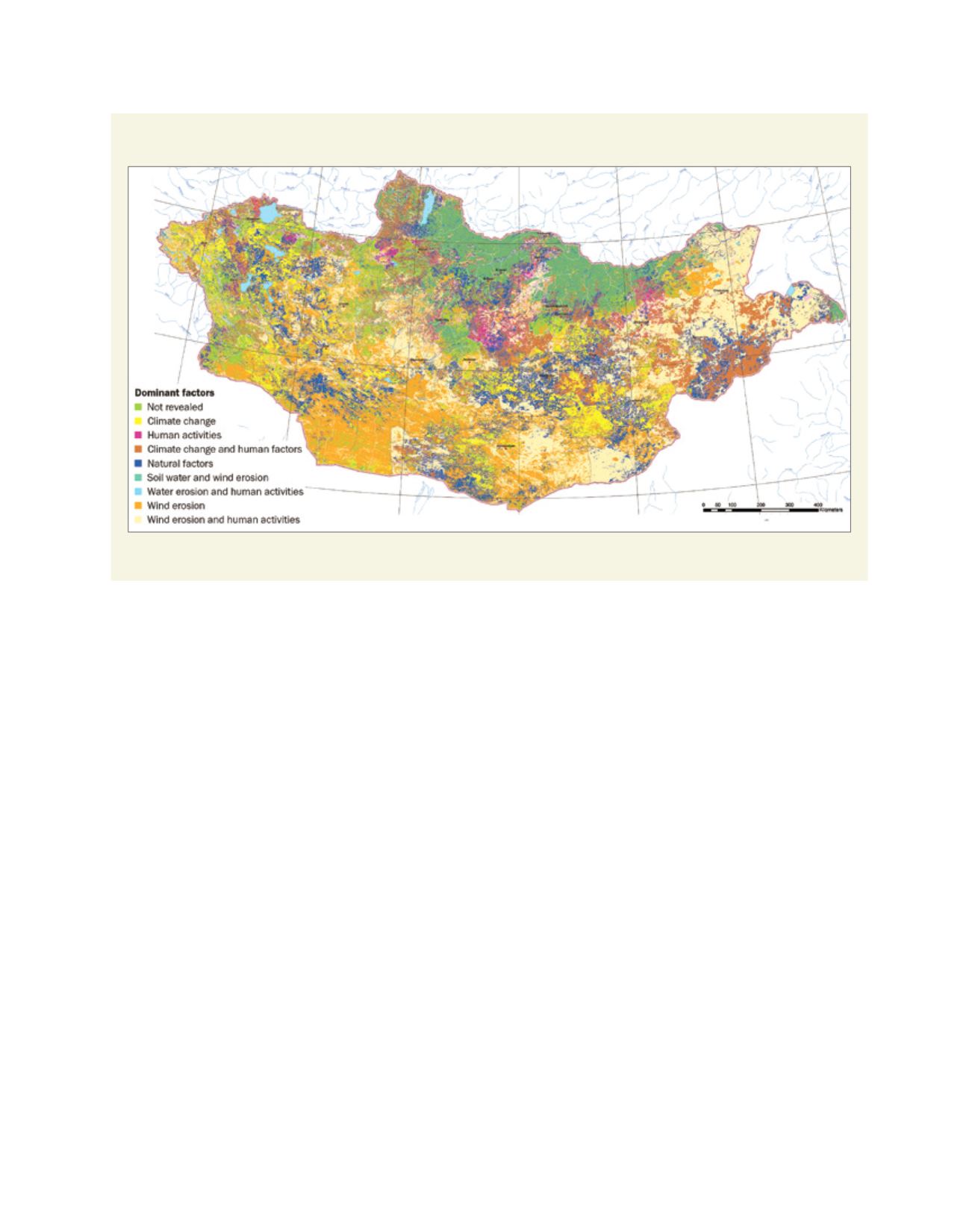

[
] 45
From meteorological observation data since the 1940s, the
lowest recorded air temperature was -55.3
0
C in the Zuungovi
soum
(district), Uvs
aimag
(subdivision), in December 1976.
According to data from nearby aerological stations, surface
temperature inversion occurs or develops diurnally at 600-1,000
m depth and 6-17
0
C. This is why in winter the river valleys
and depressions have the coldest temperatures compared to the
nearby higher terrains or open plains.
The evapotranspiration level is less than 500 mm at the
high mountain belt region; 550-700 mm at the forest steppe
zone; 650-750mm at the desert steppe; and 800-1,000 mm at
the desert zone. Mongolia receives about 230-260 days and
2,600-3,300 hours of sunshine per year.
Mongolia’s steppe and desert steppe zones are very windy.
The annual average wind velocity in these areas is 4-6 m/s.
Wind velocity is 1-2 m/s in the Altai, Khangai, Khovsgol and
Khentii mountain areas and mountain valleys, and 2-3 m/s
in all other areas. According to data from the meteorological
observation stations near aimag and soum centres around the
country, wind velocity of higher than 4 m/s was recorded in
one quarter of the country’s territory.
Mongolia’s precipitation is several times less than the
potential evapotranspiration and the territory is lacking in
humidity. The level of precipitation in the Khangai, Khovsgol
and Khentii mountains is 300-400 mm, in the forest steppes
and Mongolia Altai zones it is 250-300 mm and in the steppe
zone it is 150-200 mm, while in the desert steppe and desert
zones it is 50-150 mm.
The Gobi desert steppe and desert zone accounts for about
41.3 per cent of Mongolia’s territory and its soil is loose and
fragile, with high winds causing sand and dust storms for
30-100 days a year, compared to 120 days in southern parts of
Mongol Els. Meteorological observation data indicates some
300-600 hours of sand and dust storms a year.
From the results of studies on the impacts of global climate
change on Mongolia’s territory, it is evident that the mean
annual air temperature has increased by 1.9
0
C between 1940
and 2004. Taking the period 1961-1990 as a base, it is evident
that the warming trend in Mongolia started in 1989, intensi-
fying in the later twentieth century and the beginning of the
twenty-first century. Studies show that the mean air tempera-
ture increased by 1.6
0
C between 2000 and 2010 compared to
the period 1961-1990. In those 10 years 2001, 2004 and 2007
were the warmest and the mean annual air temperature was
1.3-2.7
0
C higher than that of the base year.
Climate warming is evident in all seasons. According to
records from the meteorological stations in Mongolia in the
last 20 years the mean annual air temperature in the winter
(November-January) increased by 0.5
0
C, in spring (February-
April) and fall (August-October) by 1.3-1.7
0
C, while the
summer temperature (May-July) increased by 4.3
0
C.
Grassland is the major ecosystem in Mongolia, and is very
important to the country’s economy and eco-environment.
Farming is a pillar industry, contributing more than 30 per
cent of Mongolia’s gross domestic product. Typical grassland,
shrubberies with large areas for pasture, desert and the Gobi
with little vegetation or bare land make up 83.2 per cent of the
country’s land area of 1.3 million km
2
. The pasture is distributed
in the south-west, south and north-east of the country, joining
with Inner Mongolia and China, constituting the fringe area of
Dominant factors affecting desertification in Mongolia
Source: Min. Env. Mongolia
L
iving
L
and
















